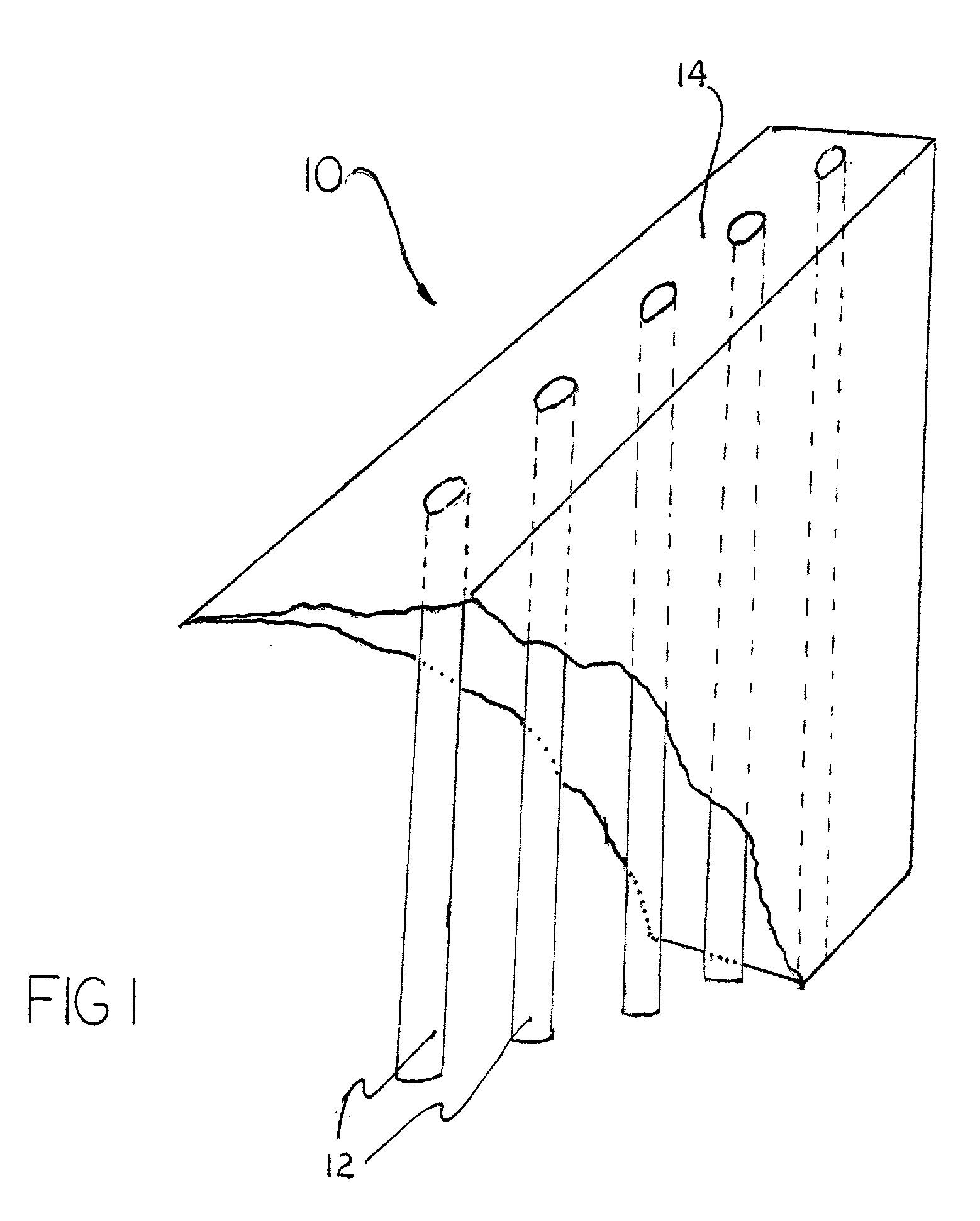Radiation shielding phosphate bonded ceramics using enriched isotopic boron compounds
a technology of phosphate bonded ceramics and isotopic boron compounds, which is applied in the direction of radioactive decontamination, nuclear engineering, nuclear elements, etc., can solve the problems of limited thermal conductivity of ceramicrete, limited application of ceramicrete in those scenarios, and the disclosure of any method for imparting radiation and/or thermal shielding to ceramic materials, etc., to achieve easy and rapid production, improve neutron absorption, and easy to cast and inexpensive
- Summary
- Abstract
- Description
- Claims
- Application Information
AI Technical Summary
Benefits of technology
Problems solved by technology
Method used
Image
Examples
Embodiment Construction
[0036]
1 A. Final compositions of samples made with natural B.sub.4C (wt. %) MKP Ash Fe.sub.2O.sub.3 (sand) Fe.sub.3O.sub.4 (gravel) B.sub.4C H.sub.2O 15.35 14.35 30.73 30.73 1 7.84 15.35 11.25 30.73 30.73 4.1 7.84 11.75 10.75 23.5 46.99 1 6.02 11.75 7.65 23.5 46.99 4.1 6.02 39.84 38.84 1 20.32 39.84 35.74 4.1 20.32
[0037]
2 B. Final compositions of samples made with natural B.sub.4C (wt. %) Aluminum MKP Ash Fe.sub.2O.sub.3 (sand) Fe.sub.3O.sub.4 (gravel) B.sub.4C H.sub.2O bar 15.35 14.35 30.73 30.73 1 7.84 10.0 15.35 11.25 30.73 30.73 4.1 7.84 10.0 11.75 10.75 23.5 46.99 1 6.02 7.7 11.75 7.65 23.5 46.99 4.1 6.02 7.7
[0038] The aluminum bars were borated with elemental boron. The bars' boron content was 4.5 wt. % enriched elemental boron. The elemental boron was >95% .sup.10B.
[0039] Additional samples were made with the direct addition of isotopically enriched B.sub.4C. The isotopically enriched B.sub.4C was also >95% .sup.10B. Those samples' compositions are given in TABLES C and D.
3 C...
PUM
| Property | Measurement | Unit |
|---|---|---|
| Fraction | aaaaa | aaaaa |
| Fraction | aaaaa | aaaaa |
| Fraction | aaaaa | aaaaa |
Abstract
Description
Claims
Application Information
 Login to View More
Login to View More - Generate Ideas
- Intellectual Property
- Life Sciences
- Materials
- Tech Scout
- Unparalleled Data Quality
- Higher Quality Content
- 60% Fewer Hallucinations
Browse by: Latest US Patents, China's latest patents, Technical Efficacy Thesaurus, Application Domain, Technology Topic, Popular Technical Reports.
© 2025 PatSnap. All rights reserved.Legal|Privacy policy|Modern Slavery Act Transparency Statement|Sitemap|About US| Contact US: help@patsnap.com

